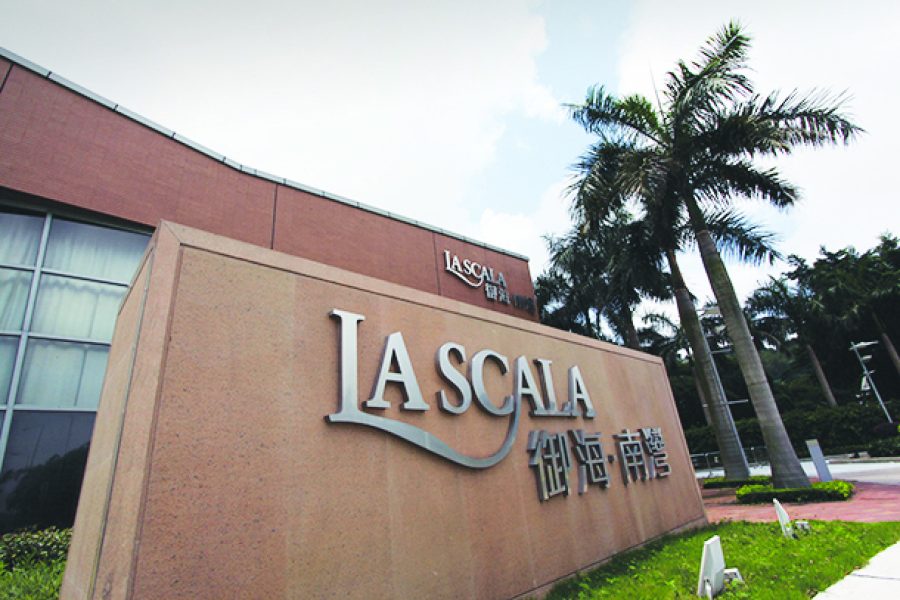Members of the Urban Planning Council voiced disagreement with the government’s plan for a huge public housing project with a proposed height limit of up to 155 metres, on the plot of the abandoned La Scala luxury housing project near the airport.
Wednesday’s meeting of the council, held at the Transport Bureau (DSAT) Building, included a discussion about the proposed legal development conditions for the project on the plot, which is at the bottom of Big Taipa Hill, in Avenida Wai Long.
In a meeting in October last year, the government-appointed council discussed the proposed legal development conditions for the public housing project for the first time.
In the October meeting, some members questioned whether the plot would be a suitable location for such a large public housing project, while other members said the proposed height limit of 155 metres would block the view of Big Taipa Hill.
In September last year, the government announced the final version of its first-ever Five-Year Development Plan, according to which more than 8,000 public housing units could be built on the plot.
In November last year, Chief Executive Fernando Chui Sai On proposed in his 2017 Policy Address to build 12,600 public housing units in “the short or medium term”, including 8,000 public housing units on the plot in Avenida Wai Long.
The legal development conditions for the project presented by the government on Wednesday’s meeting were unchanged from those presented in last October’s meeting.
The plot covers an area of 83,742 square metres on which the government proposes building public housing and community facilities. The area of the plot covers a flat surface as well as some parts of the hill.
In the meeting, councillor Manuel lok Pui Ferreira pointed out that the highest point of Big Taipa Hill is 157 metres and that its current facilities such as barbecue areas and walking trails are located at a height of between 78 metres and 90 metres. He said that, therefore, the proposed height limit of 155 metres would prevent people using those facilities from enjoying the view.
Fellow councillor Zheng Dehua said the proposed height limit would block the view of the hill, adding that it would be an “irreversible” change if the view was blocked after towers with the proposed height limit were built there. “How will future generations perceive us [the current generation] after the view is destroyed,” he said.
Fellow councillor Lam Lon Wai said while he agreed that a public housing project should be built on 155 metres was “unacceptable” because it would block the view of the hill, adding that he wouldn’t even accept a height limit of 90 metres for the project.
Responding to the councillors, Lands, Public Works and Transport Bureau (DSSOPT) Deputy Director Cheong Ion Man said the government proposed the height limit of 155 metres for the project based on the area’s aeronautical restrictions, meaning that anything exceeding the proposed height limit would jeopardise aviation safety.
Cheong also said that after the government drafted the construction plan for the project, it would carry out an environmental assess an air flow assessment. He said that the government would modify the construction plan if it could not meet the requirements of any of the three assessments.
DSSOPT Director Li Cangfeng said the government would present the reports concerning the three assessments to the council for discussion.
The government’s public housing programme comprises subsidised home ownership scheme (HOS) flats and low-rent social housing flats.
The government’s current public housing policy is that the construction of social rental housing is given priority over the construction of HOS flats that cost a fraction of their counterparts in the private property market.
In addition to the concerns about the proposed height limit, some councillors also expressed concerns that the community facilities on the plot could not meet residents’ demand if such a huge public housing project would be built there.
Fellow councillor Leong Chong In said that the Wai Long plot was far from the city’s existing communities, therefore residents living there would need to go to work and school elsewhere, which he said would impose a heavy burden on traffic in the area.
Several other members said they were concerned that the proposed large-scale public housing project would be a repetition of Coloane’s Seac Pai Van public housing estate where, they said, community facilities failed to meet residents’ demand. Fellow councillor Jorge Neto Valente urged the government not to repeat the mistakes that it made when it planned the Seac Pai Van project. Neto Valente heads the influential Macau Lawyers Association (AAM).
In response, Cheong said that for the Wai Long project the government planned to allocate 60 percent of the gross area for residential purposes and 40 percent for community facilities. He added that close to 70 percent of the gross area was allocated for residential purposes in the Seac Pai Van public housing estate.
(Macau News / The Macau Post Daily)



